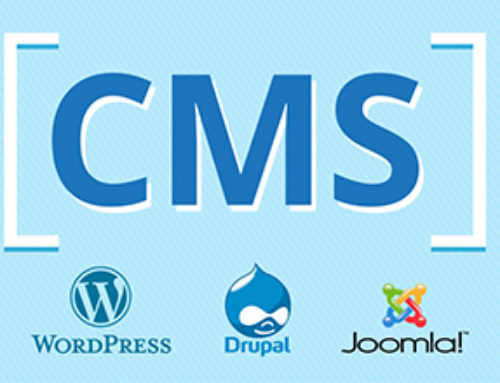What is a blockchain?
Blockchain is a decentralized, distributed ledger technology that records transactions across multiple computers in a secure and transparent manner. It was initially introduced as the underlying technology behind the cryptocurrency, Bitcoin, in 2009.
A blockchain is comprised of blocks, which store data and are linked together in a chain through cryptographic validation. Each block contains a unique cryptographic signature, known as a “hash,” that distinguishes it from all other blocks in the chain. This hash is created using complex algorithms and is based on the data contained within the block, as well as the hash of the previous block in the chain.
The decentralized nature of blockchain means that there is no single entity that controls the information stored within the chain. Instead, the network is maintained by a network of nodes, which validate and add new transactions to the chain. This makes the technology highly secure and resistant to tampering or corruption, as any attempt to change the data in one block would require the manipulation of all subsequent blocks in the chain.
In addition to its security, blockchain technology also offers increased transparency and accountability. All participants in a blockchain network have access to the same information, and every transaction is publicly recorded and auditable.
While blockchain technology is still in its early stages of development, it has the potential to revolutionize a number of industries and disrupt traditional business models. With its ability to securely and transparently manage data and transactions, blockchain is poised to play a major role in shaping the future of technology and commerce.
The core concepts of blockchain are:
- Distributed Ledger:
A peer-to-peer network’s entire transactions are recorded in a blockchain, which is a decentralised ledger. The ledger is maintained by nodes in the network, rather than a central authority.
- Cryptography:
Cryptography is used to secure the transactions and to maintain the integrity of the ledger. It uses mathematical algorithms to encrypt and decrypt information, ensuring that the ledger is secure from tampering and revision.
- Immutable:
Blockchains are immutable, meaning once a block has been added to the chain it cannot be altered or deleted. As a result, a permanent and unalterable record of every transaction is produced.
- Consensus:
To add a block to the chain, nodes in the network must reach consensus on its validity. Different blockchain systems use different consensus algorithms, such as Proof of Work (PoW), Proof of Stake (PoS), and Delegated Proof of Stake (DPoS).
- Decentralization:
Decentralization is a key concept in blockchain technology. By distributing the ledger across the network, there is no single point of control or failure, making the system more resistant to censorship, fraud, and cyber attacks.
- Tokens:
Tokens are digital assets that are issued on a blockchain and can represent anything of value, such as a currency, a commodity, or a utility. Tokens can be traded, bought, and sold like traditional securities and assets.
Is Blockchain Safe?
Blockchain technology is often touted as being secure and tamper-proof, due to its decentralized and distributed nature. The underlying mechanism of blockchain involves cryptographic algorithms that secure the transactions and make it difficult for anyone to alter the data once it has been recorded on the network.
However, like any other technology, blockchain is not immune to security threats. One major vulnerability of blockchain is the possibility of 51% attacks, where a malicious entity can control over 50% of the computing power on a blockchain network and manipulate the system. Another vulnerability is the risk of hacking attacks on individual users, such as those that occur through phishing or malware.
Despite these risks, it is important to note that the blockchain itself has not been hacked to date. Instead, it is typically weaknesses in the implementation or usage of blockchain that have led to security breaches.
To ensure the security of a blockchain system, it is important to follow best practices for secure implementation and usage. This includes implementing strong security measures for individual users, such as secure wallet management, and for the network as a whole, such as regular software updates and audits.
While blockchain is a secure technology, it is not immune to security threats. As with any other technology, it is important to take the necessary precautions to ensure its safe and secure usage.
Types of Blockchain
- Public blockchain:
Public blockchains are open to anyone and are decentralized, means that they are not controlled by any single entity. The Bitcoin blockchain is the most well-known illustration of a public blockchain. - Private blockchain:
Private blockchains are used by organizations for internal purposes and are not accessible to the public. The participants of a private blockchain network are typically known to each other and must be granted permission to join. - Consortium blockchain:
A consortium blockchain is similar to a private blockchain, but it is shared among a group of organizations rather than a single entity. The consensus mechanism for a consortium blockchain is often controlled by a pre-selected set of nodes. - Hybrid blockchain:
As the name suggests, a hybrid blockchain combines features of both public and private blockchains. A hybrid blockchain allows for both public and private transactions to take place on the same network. - Sidechain:
A involves the implementation is a secondary blockchain connected to the primary blockchain. The main purpose of a sidechain is to allow for the transfer of assets between different blockchains. This allows for greater flexibility and scalability within the blockchain ecosystem.
Features
- Decentralization:
One of the key features of blockchain is that it operates on a peer-to-peer network, without a central authority. This means that transactions are validated and recorded by multiple participants in the network, reducing the risk of fraud and tampering.
- Immutable:
Once a block is added to the blockchain, its contents cannot be altered. This makes blockchain an ideal technology for maintaining a secure and permanent record of transactions.
- Transparency:
All participants in the blockchain network have access to the same information. This makes it possible to track the history of transactions and ensure that they are valid.
- Security:
Blockchain uses cryptography to secure transactions and prevent unauthorized access. The combination of decentralized validation and cryptographic security makes blockchain an extremely secure technology.
- Traceability:
Blockchain enables the tracking of the entire lifecycle of a digital asset, from its creation to its eventual transfer. This makes it possible to track the origin of goods and ensure their authenticity.
- Smart Contracts:
These are self-executing agreements that can be automatically executed when certain predetermined conditions are met. This makes it possible to automate processes and reduce the need for intermediaries.
- Tokenization:
Blockchain makes it possible to tokenize physical assets, such as real estate or commodities, turning them into digital assets that can be easily bought and sold.
Advantages
- Decentralization:
One of the most important aspects of blockchain technology is that it operates on a decentralized network, meaning that there is no single central authority controlling it. This eliminates the need for intermediaries and reduces the risk of a single point of failure.
- Immutability:
Once data is recorded on a blockchain, it cannot be altered or deleted. This makes blockchain ideal for storing sensitive information such as financial transactions and personal data.
- Transparency:
All participants in a blockchain network have access to the same information, ensuring that the system is transparent and trustworthy.
- Security:
Blockchain uses cryptographic techniques to secure transactions and ensure that data cannot be tampered with. This makes it much more secure than traditional systems that rely on a central authority for security.
- Traceability:
The nature of blockchain allows for the creation of a transparent and permanent record of all transactions. This makes it easier to trace the history of a particular asset or piece of information.
- Efficiency:
Blockchain technology has the potential to automate many processes and reduce the time and cost associated with traditional methods. For example, cross-border payments can be processed much faster using blockchain.
- Smart Contracts:
Blockchain technology enables the creation of self-executing contracts with the terms of the agreement between buyer and seller being directly written into code. This can simplify and automate the contract process.
- Interoperability:
Blockchains are designed to be able to communicate and interact with other blockchains, providing the potential for a more connected and streamlined system.
Disadvantages
- Scalability:
Despite being a distributed system, the current blockchain architecture has a limited capacity for processing transactions. With the growing number of users, the network can become congested, resulting in slow processing times and high fees.
- Energy Consumption:
Blockchain relies on a consensus mechanism known as Proof of Work (PoW), which requires a large amount of computational power and energy to validate transactions. This has led to criticism of the technology’s carbon footprint and sustainability.
- Complexity:
Blockchain technology is highly technical, making it difficult for non-technical users to understand and use. This presents a barrier to widespread adoption, particularly in industries where a high degree of expertise is required.
- Security Concerns:
While blockchain is generally considered secure, there have been instances of hacking and security breaches. The decentralised nature of the technology can also make it difficult to track and prevent malicious activity.
- Limited Use Cases:
Blockchain is still in its early stages of development, and its use cases are largely limited to cryptocurrencies and other financial applications. While the technology has the potential for a wide range of applications, its limited adoption and complexity of implementation limit its use.
- Regulation:
Blockchain is still a relatively unregulated industry, and there is a lack of clear legal frameworks for the technology. This lack of regulation can make it difficult for businesses to adopt the technology, as they are concerned about potential legal and financial risks.
- Interoperability Issues:
As there are many different blockchain platforms and networks, there is a lack of interoperability between them. This makes it difficult for users to switch between networks and can limit the growth of the technology.
Conclusion
Blockchain is a decentralized and distributed ledger technology that allows for secure, transparent, and tamper-proof transactions. It has numerous potential uses including secure digital transactions, supply chain management, and secure storage of data. The technology is still in its early stages, but its decentralized nature and potential to disrupt traditional business models has attracted a lot of attention from both the public and private sector. However, the adoption of blockchain faces challenges related to scalability, regulation, and security. Despite these challenges, many believe that blockchain has the potential to bring about significant changes in various industries in the future.
FAQ
In a blockchain network, transactions are grouped into blocks, which are then cryptographically linked and verified by network participants. This creates an immutable chain of blocks, hence the name “blockchain.”
The benefits of blockchain include increased transparency, security, and immutability of data. It also eliminates the need for intermediaries and enhances trust between parties.
Public blockchains are open to anyone and allow for anonymous participation, while private blockchains are permissioned and controlled by a single entity or consortium.
A smart contract is a self-executing agreement with the terms of the agreement between buyer and seller being directly written into lines of code.
Cryptocurrency is a type of digital asset that uses blockchain technology for secure and transparent transactions. The most well-known cryptocurrency is Bitcoin.
The future of blockchain technology is promising and has the potential to disrupt many industries, including finance, supply chain management, and healthcare. However, the technology is still in its early stages and there are many challenges to overcome before widespread adoption can occur.








